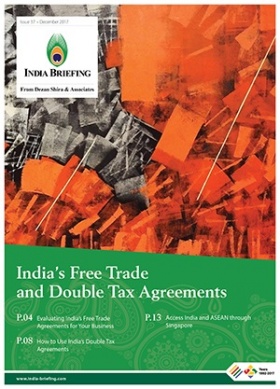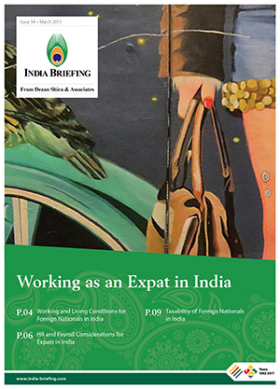Should India be Your China Plus One?
China’s cheap land and labor, huge market, and preferential investment policies have long served as the driving force behind foreign investments in the country. However, China is gradually losing its cost advantage and competitiveness in comparison to other Asian countries.
As a result, many companies in China are looking to diversify their operations by adding another location in Asia. This strategy is known as the ‘China plus one’ model. The strategy is most applicable to manufacturers and traders, and is most commonly associated with Southeast Asian countries like Vietnam, Cambodia, and Thailand.
Businesses adopt the China plus one model to reduce operating costs, diversify workforces and supply chains, as well as access new markets. Businesses that adopt the strategy become less vulnerable to shocks like supply chain disruption, currency fluctuations, and tariff risks. Businesses can quickly scale up one country if market or operating conditions deteriorate in the other.
India previously represented a more difficult alternative to China in comparison to Southeast Asian countries, but many businesses that are invested in China are now taking a second look at India.
Why you need a China ‘Plus One’
Increasing labor costs
Labor shortages and an aging population are leading to rising wages in China. In the manufacturing sector, wages are rising at a rate of more than 10 percent per year on average. Meanwhile, increased domestic consumption also encourages the rise in wages. The minimum monthly wage in Shanghai and Shenzhen, for example, has been increased to RMB 2,480 (US$369) and RMB 2,200 (US$328) respectively.
Less preferential policies
Until 2007, companies with foreign investment paid 15 percent corporate tax, while domestic firms were subject to 33 percent tax in China. However, in the past decade, the Chinese government has gradually phased out its preferential policies – partly to support its domestic companies, by unifying the tax rate for domestic and foreign companies at 25 percent.
Higher regulatory standards
China is known as the ‘world’s factory’, but these factories have brought severe pollution to much of the country. This has prompted the Chinese government to take aim at polluters with new environmental standards, pollution control systems, and environmental taxes.
Apart from these new regulations, difficult legal hurdles, and a maturing social security system have forced foreign investors to rethink their strategies and move some of their production to other countries.
Risk diversification
The escalating US-China Trade War has huge implications for heavily integrated and globalized supply chains. So far, the US has levied tariffs on US$250bn of Chinese products. While China has attempted to soften the blow for exporters, the increased tariffs have disrupted supply and distribution chains.
Narrowing margins and the prospect of further tariff increase is prompting companies to reshuffle their production network and move their factories from China to lower-cost countries in Asia. Spreading production across several markets leaves producers less vulnerable to supply chain disruption, currency fluctuations, and tariff risks in any individual market.
Why India should be your ‘Plus One’
Massive market
India has a GDP (PPP) of US$7.78 trillion, the third largest in the world on this measure after China and the United States. The country’s nominal year-over-year expenditure growth of 12 percent is more than double the anticipated global rate of 5 percent. This is likely to make India the third largest consumer market by 2025. Rising affluence is the biggest driver of this growth, followed by the change in the consumer behavior and spending patterns, especially in lower-tier cities.
Growth in digital connectivity, infrastructure development coupled with rising household income, and an increase in India’s consumers spending represent the massive opportunities that lie in the Indian market.
Large labor force
In addition to a population of 1.35 billion people, India has a large, young population. More than half of India’s total population is under the age of 25, and two-third are less than 35 years of age. By 2027, India is likely to have the world’s largest workforce, with a billion people aged between 15 and 64. Analysts expect this large, young workforce to make a significant contribution to India’s growing consumer base.
Low labor costs
China is committed to developing high-end, value-added manufacturing to fuel the next stage of its economic development. India, on the other hand, just wants to develop a manufacturing base.
Companies that want to manufacture cheap goods in Asia need to understand how lower labor costs in India can help them achieve their goals. India has some of the lowest labor costs in Asia: an hourly labor cost in India is roughly one-third the cost of the same hour in China.
Government support for industry
The Indian government has introduced a wide spectrum of programs and incentives across sectors to encourage manufacturing in the country. The country’s ‘Make in India’ campaign is designed to transform India into a global manufacturing hub by facilitating investment, fostering innovation, and building best-in-class manufacturing infrastructure.
Government initiatives to create smart cities, trade corridors, and industrial clusters also have the potential to create more business friendly environments. Beyond this, Modi’s encouragement of ‘competitive federalism’ has helped localize economic reforms and business incentives, adding a healthy dose of realism to the federal government’s expansive vision.
Editor’s Note: This article was first published on May 15, 2015 is updated on June 7, 2019 to incorporate latest developments.
About Us
India Briefing is produced by Dezan Shira & Associates. The firm assists foreign investors throughout Asia from offices across the world, including in Delhi and Mumbai. Readers may write india@dezshira.com for more support on doing business in India.
- Previous Article Employees’ State Insurance – A Social Security Scheme in India
- Next Article Special Economic Zones and Warehousing Clusters in Delhi NCR













